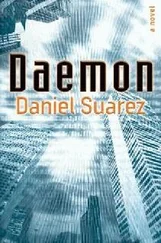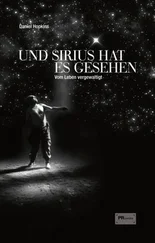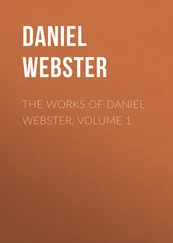“Like I said: fraud.”
Grady looked unfazed. “Then it would make for the most boring lawsuit ever. Besides, someone in government was evidently intrigued by my math.”
Kulkarni turned to Alcot. “Did you know about this, Bert?”
Alcot grimaced. “I was unaware of it for a time, but eventually I came to accept it as necessary.”
“Your professional reputation—”
Grady interceded. “The fault is mine. Not Professor Alcot’s. But as you’ll see, none of that matters now.”
Alcot held up a reassuring hand. “I’ll be fine, Sam.”
“I’m concerned that Mr. Grady has been trading on your academic credentials.”
“It’s not like that at all. Almost the opposite, in fact.”
Kulkarni turned back to Grady. “So what is it you’re doing with these superfluids?”
Johnson glanced between the physicists. “‘Superfluids.’ ‘Baryonic matter.’ It all sounds like bullshit to me.”
Grady took a swig from a forty-ounce beer, then wiped his beard with his gloved hand. “Superfluids are very real, Mr. Johnson. A superfluid is a state in which matter behaves like a fluid with zero viscosity and zero entropy. Looks like a normal liquid, but at ultralow temperatures flows without friction. Point is: In certain extreme environments the standard model of physics breaks down. Look…”
He approached a glass enclosure mounted to one side of the tower and slipped his arms through a pair of thick silvery gloves in its face. The others watched as inside the glovebox Grady unscrewed a smoking ceramic cylinder from the side of the monstrous assembly. He then grabbed a nearby glass beaker and carefully poured a clear, steaming liquid into it from the cylinder.
“This is helium-4 at slightly below two-point-one-seven Kelvin.” He held the beaker up and to the side. Even though the beaker was made of thick glass, the liquid inside dripped through the bottom as if it were a window screen. It hit the floor of the glovebox and quickly evaporated.
Johnson looked surprised. “Holy shit. It’s pouring through glass.”
“Exactly. In a quantum state strange things happen. It’s paring matter down to its essence. Subatomic particles. Slipping between the cracks of standard physics.” He screwed the cylinder back in the monstrous assembly. “Each particle of helium-4 is a boson, by virtue of its zero spin. At the lambda point, its quantum effects become apparent on a macroscopic scale—meaning individual atoms are no longer relevant within the liquid. Superfluid vacuum theory is an approach in theoretical physics where space-time itself is viewed as a superfluid. The fluid of reality.”
Kulkarni frowned. “Superfluid vacuum theory? Why… What are you trying to do here, Mr. Grady?”
“We’re attempting to reflect gravitational waves, Doctor Kulkarni.”
Kulkarni was momentarily speechless. He turned to Alcot. “Is he serious, Bert? And you agreed to this?”
Alcot shrugged. “They say it’s important to stay active in retirement.”
Kulkarni turned back to Grady. “What on earth made you think this was feasible?”
“Because I can see it right here.” Grady pressed a finger against his head.
Kulkarni just stared.
Grady held up a hand. “All right, you’re skeptical. Fair enough.” He gestured to the tower. “A superfluid flows without friction. And superconductors allow electrons to flow without resistance. What we did was suspend a graphene coil within a superfluid.”
“Why graphene?”
“It’s a superconducting film. Replicates electrons moving through a near-perfect vacuum. Isolates particles from interference. Graphene also exhibits exotic effects under certain conditions.”
“I’m still not seeing how this relates to your goal, Mr. Grady.”
“Right. I needed a charged superconducting sheet. The quantum mechanical nonlocalizability of the negatively charged Cooper pairs, protected from the localizing effect of decoherence by an energy gap, causes the pairs to undergo nongeodesic motion in the presence of a gravitational wave.”
Marrano threw up his hands. “I told you, Professor, this guy is just stringing words together at random.”
Kulkarni held up a reassuring hand to Marrano and focused back on Grady. “Go on.”
Grady shrugged. “The surrounding non-superconducting ionic lattice is localized and so executes geodesic motion, moving along with space-time, while the Cooper pairs execute non-geodesic motion—thereby accelerating relative to space-time. The different motions lead to a separation of charge. That charge separation causes the graphene to become electrically polarized, generating a restoring Coulomb force. The back action of the Coulomb force on the Cooper pairs magnifies the mass supercurrents generated by the wave—producing a reflection.”
Kulkarni grimaced. “Mr. Grady, if this was so, why do Bose-Einstein condensates follow geodesics? I can drop them in a vacuum chamber, and they fall just like Galileo’s rock.”
Grady grabbed a piece of paper from a table and started making intricate folds as he talked. “Yes, but the deBroglie wavelength of the BEC is on the order of a millimeter, whereas the gravity field wavelength is effectively infinite—which means gravity can move it around. If the de Broglie wavelength can be made longer than the gravity wavelength, we can in principle isolate the BEC from the gravity wave.”
“Okay, but even so, it’s only true for time-varying fields—not static fields like this.”
“Agreed, but I had an idea about that, too.” He held up what was now a paper sphere—handily crafted. He waved his hand around it. “Neutron stars have massive magnetic fields. And superconductors—like this graphene— exclude magnetic fields. But a neutron star like Cassiopeia A—which has a proton superconductor at its core—nonetheless has a massive magnetic field.”
Kulkarni just stared.
“How is that possible, I wondered? It’s because superfluids containing charged particles are also superconductors. The combination has some extraordinary effects. Add a superfluid to a superconductor, and the superconducting boundary shifts, changing the value of kappa and causing truly exotic behavior at the new superconducting boundary.” He slapped the side of the massive assembly. “I had a theory about the distortion of gravitational waves at that superconducting boundary.”
Kulkarni sighed. “Mr. Grady, I don’t see how this could accomplish anything except waste money.”
Grady gazed at the professor. “Right…” He turned to the chubbier of the two Asian men. “Raj, bring the power up, please.”
“You got it.” Perkasa chuckled and moved toward the bank of capacitors on the edge of the room. He motioned to the visitors. “You guys may want to step back a bit. I’m about to pump fifty megawatts into this thing.”
Kulkarni snapped a look at Grady. “That could light a small city.”
Grady nodded. “Yeah, I know.”
Before anyone could object, Perkasa raised his hand over a glowing button. “Heads up! And three, and two, and one…” With a jab of his thick finger a deep hum settled over the lab. An eerie glow appeared in the sphere as motes of dust were ionized; then the glow faded.
Grady raised his beer bottle to the opening of a long clear tube that snaked down into the heart of the monstrous assembly. “Just watch.” He poured.
All eyes followed the beer as it coursed down the plastic tube and spilled out across the concave platform… .
At which point the liquid fell straight up.
Kulkarni removed his glasses and stared, mouth agape. “Good lord…”
As the liquid “fell” upward, it passed some invisible point where natural gravity returned, and then it spilled back toward earth again, like a fountain—only to be caught once more in the altered field. Soon the liquid began bobbing up and down, oscillating between ever narrowing high and low points until it reached equilibrium. Before long it was bubbling around like a domed membrane on the edge of both gravity fields, a seething polar “beer cap” on an invisible globe.
Читать дальше












